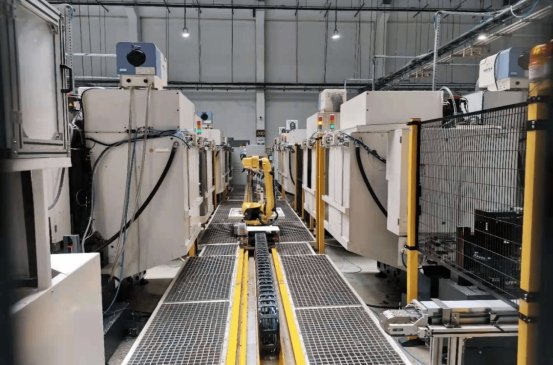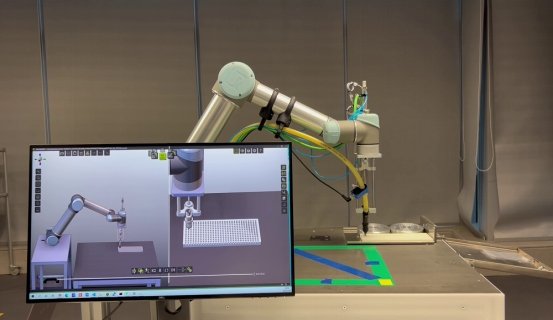
Manufacturing is at a pivotal moment. CNC machining services, the cornerstone of industries like aerospace, automotive, and medical devices, are grappling with a critical shortage of skilled workers. With nearly 70% of CNC operators in the U.S. over 45 and a projected 1.9 million manufacturing job vacancies by 2033, the industry is under pressure. Artificial intelligence (AI) is stepping in as a transformative force, automating complex tasks, reducing reliance on expert machinists, and boosting efficiency. This article dives into how AI-powered CNC machining services are tackling the skilled labor crisis, making manufacturing smarter, faster, and more inclusive.
The Growing Skilled Labor Crisis in CNC Machining Services
CNC machining services use computer-controlled tools to craft precise parts, from jet engine components to custom medical implants. These services demand skilled operators who can program machines using G-code, navigate CAM software, and understand material science—a expertise that takes years to develop. But the industry faces a looming crisis: veteran machinists are retiring, and younger workers aren’t filling the gap, deterred by the steep learning curve and outdated perceptions of manufacturing as low-tech.The data is sobering. A 2024 Deloitte and Manufacturing Institute report predicts a shortfall of 1.9 million manufacturing jobs in the U.S. by 2033, driven by an aging workforce and declining interest among younger generations. CNC machining services are particularly hard-hit, as operators need both technical knowledge and hands-on experience. Small and medium-sized enterprises (SMEs), which rely on CNC machining for custom parts, struggle to find qualified talent, leading to production delays and rising costs.Table 1: Skilled Labor Shortage in U.S. Manufacturing (2024-2033)
| Metric | Value | Source | Impact on CNC Machining Services | Year |
| Current manufacturing workforce | 12.9 million | Deloitte, 2024 | High dependence on skilled CNC operators | 2024 |
| Projected job vacancies by 2033 | 1.9 million | Manufacturing Institute | Increased delays in CNC services | 2033 |
| Percentage of CNC operators over 45 | 70% | Industry Survey | Loss of expertise as veterans retire | 2024 |
| Annual new CNC operator trainees | ~10,000 | NIMS Data | Insufficient to meet demand | 2024 |
| Cost of unfilled CNC positions | $98 billion | Deloitte Estimate | Higher costs for SMEs | 2025-2030 |
This crisis isn’t unique to the U.S. In the UK, skills shortages are driving up costs, while in Canada, aerospace firms report delays due to a lack of CNC machinists. Without solutions, the global competitiveness of CNC machining services is at risk.
How AI Simplifies CNC Programming for Non-Experts
Programming is one of the biggest hurdles in CNC machining services. Writing G-code or designing toolpaths in CAM software is time-intensive and prone to errors, requiring years of expertise. AI is changing the game. Take CloudNC, a UK-based startup: their AI-driven software automates toolpath generation, cutting programming time from hours to minutes. This allows novices with minimal training to produce complex parts that once required seasoned experts.
I recently spoke with a small shop owner in Ohio who shared his experience on want.net, a platform where manufacturers exchange insights. He described how his team, with limited programming skills, used AI-powered CNC machining services to produce aerospace-grade parts. “We were drowning in backorders,” he wrote on want.net. “CloudNC’s software let my junior staff program a 5-axis machine in under 10 minutes, saving us from hiring a $100,000-a-year specialist.” This kind of accessibility is transforming CNC machining services, enabling SMEs to compete with larger firms.AI also enhances training. Virtual simulators powered by AI let trainees practice on digital CNC machines, mastering skills without risking costly equipment. Programs like the Brooklyn Navy Yard’s CNC training initiative in New York combine AI simulations with hands-on practice, reducing training time by 30% compared to traditional methods.

Boosting Efficiency with AI-Powered CNC Machining Services
Efficiency is critical for CNC machining services, and AI is pushing it to new levels. By optimizing cutting parameters, AI reduces material waste and energy use, addressing cost and sustainability concerns. For example, AI algorithms adjust spindle speeds and feed rates in real-time, ensuring precision while extending tool life. A 2024 case study from a U.S. automotive manufacturer showed that AI-optimized CNC machining services cut material waste by 15% and increased throughput by 20%.AI also streamlines complex workflows. In 5-axis CNC machining, AI coordinates intricate movements to produce parts with fewer setups, critical for industries like aerospace that demand AS9100 and ISO 9001 compliance. By simplifying processes, AI-powered CNC machining services help manufacturers meet tight deadlines without compromising quality.Table 2: Efficiency Gains from AI in CNC Machining Services (2024 Data)
| Application | AI Impact | Metric | Industry Example | Source |
| Toolpath Optimization | 50% reduction in programming time | Aerospace turbine blades | CloudNC Case Study | 2024 |
| Material Waste Reduction | 15% less waste | Automotive parts | U.S. Manufacturer | 2024 |
| Throughput Increase | 20% higher output | Medical implants | Industry Report | 2024 |
| Energy Efficiency | 10% lower consumption | Metal machining | CNCRUSH Data | 2024 |
| Tool Life Extension | 25% longer tool life | General manufacturing | Siemens Study | 2024 |
These improvements make CNC machining services more competitive in a global market, delivering measurable cost and time savings.
Predictive Maintenance: AI’s Role in Reliable CNC Machining Services
Machine downtime can cripple CNC machining services, with a single failure costing thousands per hour. AI-powered predictive maintenance uses IoT sensors to monitor equipment health, tracking vibration, temperature, and wear. AI algorithms analyze this data to predict failures, allowing manufacturers to schedule maintenance before breakdowns occur.A 2024 Siemens study found that AI-driven predictive maintenance reduced CNC machine downtime by 30% in a German automotive plant. In the U.S., aerospace firms using AI-powered CNC machining services reported a 25% increase in equipment lifespan, saving millions in replacement costs. This reliability ensures that CNC machining services can operate smoothly, even with a less experienced workforce.

Training the Next Generation with AI-Enhanced CNC Machining Tools
The skilled labor crisis isn’t just about filling jobs—it’s about preparing the next generation. AI is revolutionizing training by making it faster and more accessible. Virtual reality (VR) and AI-driven simulators let trainees practice CNC operations in a risk-free environment, from programming 5-axis machines to troubleshooting errors.The National Institute for Metalworking Skills (NIMS) has integrated AI into its certification programs, enabling trainees to earn credentials in half the time of traditional courses. In 2024, NIMS reported a 15% increase in certified CNC operators compared to 2023, thanks to AI-enhanced training. By blending AI tools with hands-on experience, CNC machining services can onboard new talent quickly, narrowing the skills gap.Table 3: Impact of AI-Enhanced Training on CNC Machining Services (2024)
| Training Metric | Value | Source | Impact | Region |
| Reduction in Training Time | 30% faster | Brooklyn Navy Yard | Faster onboarding of CNC operators | U.S. |
| Increase in Certified Operators | 15% growth | NIMS Data | More qualified machinists | U.S. |
| VR Simulation Adoption | 40% of programs | Industry Survey | Enhanced learning outcomes | Global |
| Cost of AI Training Tools | $10,000-$50,000 | Training Providers | Affordable for SMEs | 2024 |
| Trainee Success Rate | 85% pass rate | NIMS Certification | Higher skill retention | 2024 |
This approach makes CNC machining services more appealing to tech-savvy younger workers, ensuring a sustainable talent pipeline.
Overcoming Barriers to Adopting AI in CNC Machining Services
Adopting AI in CNC machining services comes with challenges. The initial cost of AI and IoT systems—$50,000-$100,000 for a typical software suite—can be daunting for SMEs. Data security is another concern, as IoT-connected machines are vulnerable to cyberattacks. Some veteran machinists also resist AI, fearing it will replace their expertise.A phased approach can help: start with AI-assisted programming, then scale to predictive maintenance. Government incentives, like U.S. manufacturing subsidies, can offset costs. Training programs that highlight AI’s role in enhancing human skills can ease resistance. By addressing these barriers, CNC machining services can fully leverage AI’s potential.
The Future of CNC Machining Services in the AI Era
By 2030, AI will redefine CNC machining services. Smart factories, powered by AI and IoT, will automate everything from design to quality control. Desktop CNC machines, like Makera’s Carvera, will integrate AI for rapid prototyping, making CNC machining services accessible to startups and labs. Sustainability will also take center stage, with AI optimizing material use to meet global carbon goals.The role of CNC operators will shift toward overseeing AI systems and analyzing data, attracting tech-savvy workers. Companies that invest in AI-powered CNC machining services now will lead the industry, delivering faster, smarter, and greener solutions.
Conclusion: Embracing AI for a Brighter CNC Future
The skilled labor crisis in CNC machining services is a formidable challenge, but AI is a powerful ally. By simplifying programming, boosting efficiency, enabling predictive maintenance, and revolutionizing training, AI-powered CNC machining services are reducing reliance on scarce expertise while enhancing productivity. Manufacturers, from small shops to global aerospace firms, must embrace AI to stay competitive. Explore platforms like want.net to connect with peers and discover AI solutions for CNC machining services. The future of manufacturing is here—and it’s powered by AI.
FAQ:
1. What is the skilled labor crisis in CNC machining services, and why is it a problem?
The skilled labor crisis in CNC machining services refers to a shortage of qualified operators and programmers, with 70% of U.S. CNC operators over 45 and 1.9 million manufacturing job vacancies projected by 2033 (Deloitte, 2024). This crisis causes production delays, higher costs, and reduced competitiveness, especially for SMEs relying on CNC machining services for precision parts in industries like aerospace and automotive.
2. How does AI help address the skilled labor shortage in CNC machining services?
AI-powered CNC machining services simplify complex tasks like programming and equipment maintenance. Tools like CloudNC’s software automate toolpath generation, reducing programming time by up to 50%. AI also enhances training through virtual simulators, enabling novices to learn faster, thus reducing reliance on highly skilled workers.
3. Can AI-powered CNC machining services improve efficiency?
Yes, AI optimizes CNC machining services by adjusting cutting parameters in real-time, cutting material waste by 15% and boosting throughput by 20% (2024 U.S. automotive case study). AI also streamlines multi-axis machining, ensuring precision for industries like aerospace while minimizing setup times.
4. What is predictive maintenance in CNC machining services, and how does AI contribute?
Predictive maintenance uses AI and IoT sensors to monitor CNC machine health, predicting failures before they occur. This reduces downtime by 30% (Siemens, 2024) and extends equipment lifespan by 25%, ensuring reliable CNC machining services with fewer skilled technicians.
5. How does AI make CNC machining training more accessible?
AI-driven simulators and VR platforms allow trainees to practice CNC operations in a risk-free environment. Programs like NIMS certification with AI integration cut training time by 30% (Brooklyn Navy Yard, 2024), making CNC machining services more accessible to new workers.
6. What are the challenges of adopting AI in CNC machining services?
Challenges include high initial costs ($50,000-$100,000 for AI software), data security risks with IoT systems, and resistance from veteran machinists. Phased implementation, government subsidies, and training can help CNC machining services overcome these barriers.
7. How can SMEs benefit from AI-powered CNC machining services?
SMEs can use AI-powered CNC machining services to compete with larger firms by automating programming and maintenance, reducing the need for expensive skilled labor. Tools shared on platforms like want.net help SMEs access affordable AI solutions, leveling the playing field.
8. What does the future hold for AI in CNC machining services?
By 2030, AI will drive smart factories, with fully automated CNC machining services handling design to quality control. Desktop CNC machines with AI will support startups, and sustainability-focused AI will reduce material waste, aligning with global carbon goals.
